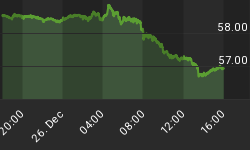As Chart 1 shows, German real GDP growth, at an annualized rate of 9.0%, blew away U.S. growth at a paltry 1.6%. A number of factors might account for the stronger performance of the German in economy in the second quarter vs. the U.S. But one I want to concentrate on is the change in credit provided by private-sector financial institutions. These data are presented in Chart 2. I do not have oranges-to-oranges data to compare, but I do have oranges to tangerines data. That is, for Germany, the change in credit is for all monetary financial institutions (MFI); for the U.S., it is for commercial banks. Notice that in the second quarter of this year, MFI-created credit soared at an annualized rate of 8.9%. In the U.S., commercial bank credit contracted at an annualized rate of 6.0%. In fact, ever since the fourth quarter of 2008, U.S. commercial bank credit has "underperformed" German MFI credit. As I said, the behavior of MFI credit or commercial bank credit is not the only factor accounting for stronger second-quarter German real GDP growth vs. the U.S., but I think it is an important factor.
Chart 1
Chart 2
















